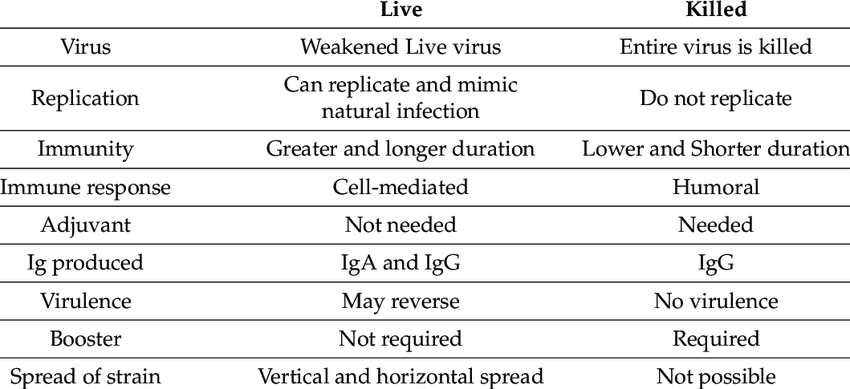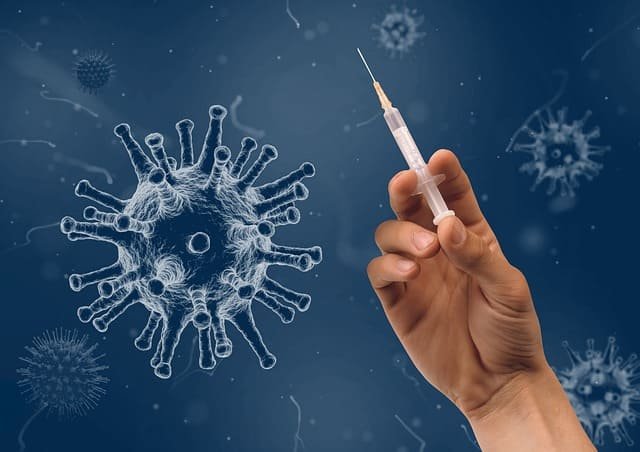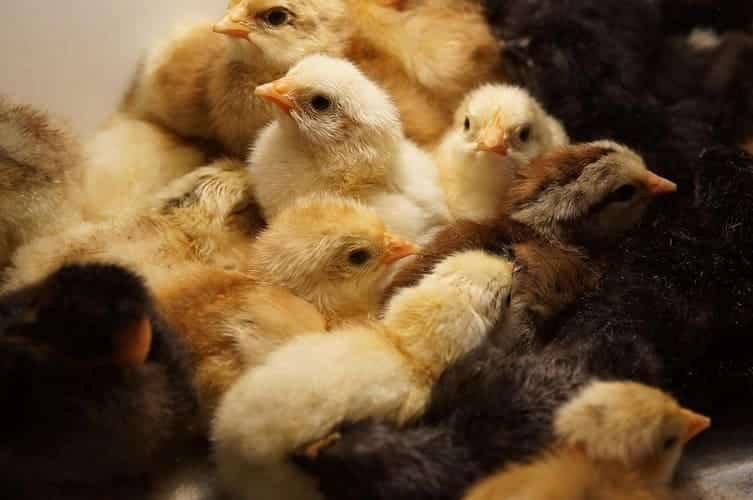Introduction: Passive Immunity and Vaccination
Passive immunity is one of the most important temporary defense mechanisms acquired by animals through the transfer of ready-made antibodies, either from the mother to the offspring (via colostrum) or through passive immunization using prepared sera. In contrast, vaccination stimulates the immune system to produce an active immune response, providing long-term protection against pathogens.
First: Classification of Vaccines by Pathogen Type
Veterinary vaccines are classified according to the type of pathogen into:
- Viral Vaccines: e.g., Newcastle Disease Vaccine in poultry.
- Bacterial Vaccines: e.g., Pasteurella multocida vaccine.
- Fungal Vaccines: Rare, mainly used against dermatophytes.
- Parasitic Vaccines: e.g., Theileria annulata vaccine in cattle.
Second: Classification of Vaccines by Attenuation Level
- Live Attenuated Vaccines: Contain live pathogens weakened in the laboratory. They strongly stimulate immunity, e.g., Sheep Pox Vaccine.
- Inactivated (Killed) Vaccines: Contain pathogens killed by heat or chemicals. Safe but may require boosters, e.g., Brucella abortus vaccine strain 45/20.
Third: Classification of Vaccines by Antigen Type
- Whole-pathogen Vaccines: Contain the entire pathogen (live or dead).
- Toxoid Vaccines: Contain inactivated toxins, e.g., Enterotoxaemia Vaccine against Clostridium perfringens toxins.

Fourth: Classification of Vaccines by Composition
- Monovalent Vaccines: Protect against a single pathogen, e.g., Brucella vaccine.
- Multivalent (Polyvalent) Vaccines: Protect against multiple diseases, such as:
- Tetravalent Poultry Vaccine: Covers Newcastle disease, infectious bronchitis, Gumboro, and avian influenza.
- Combined Pasteurella + Enterotoxaemia Vaccine: Commonly used in ruminants.
Fifth: Major Veterinary Vaccines in Current Use
According to the World Organisation for Animal Health (WOAH), the following vaccines are widely used:
| Animal Species | Major Vaccines |
|---|---|
| Poultry | Newcastle, Gumboro, Avian Influenza, Coccidiosis |
| Cattle | Foot-and-mouth disease, Brucellosis, Three-day sickness, Theileriosis |
| Sheep & Goats | Sheep pox, Enterotoxaemia, Septicemia |
| Camels | Brucellosis, Tetanus, Foot-and-mouth disease |
Statistic: FAO data (2023) indicate that routine vaccination against foot-and-mouth disease in cattle has reduced outbreaks by 70% in Africa over the last five years.
Sixth: Herd Vaccination Strategies
1. Poultry Flocks
Vaccination is a cornerstone of preventive health programs. Vaccines are usually administered via:
- Drinking water
- Ocular drop
- Spray vaccination
Precautions:
- Ensure water quality and absence of disinfectants.
- Apply vaccines at specific ages within standard immunization programs.
- Ensure good ventilation during spray vaccination to reduce respiratory stress.
2. Ruminant Herds
Vaccines are used individually or collectively, with administration routes including:
- Intramuscular injection
- Subcutaneous injection
Precautions:
- Check animals before vaccination to ensure they are free of chronic diseases.
- Avoid vaccinating stressed or febrile animals.
- Store vaccines according to manufacturer’s instructions (commonly 2–8°C).
- Record all procedures in the vaccination log.
Conclusion
Veterinary vaccination programs are a cornerstone for maintaining herd health and ensuring food security. A deep understanding of vaccine types, mechanisms, and administration methods contributes to safe and effective outcomes. Veterinarians must adhere to international standards and rely on trusted sources to ensure the effectiveness of immunization programs.





